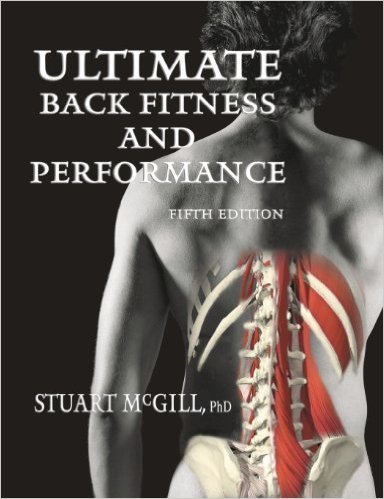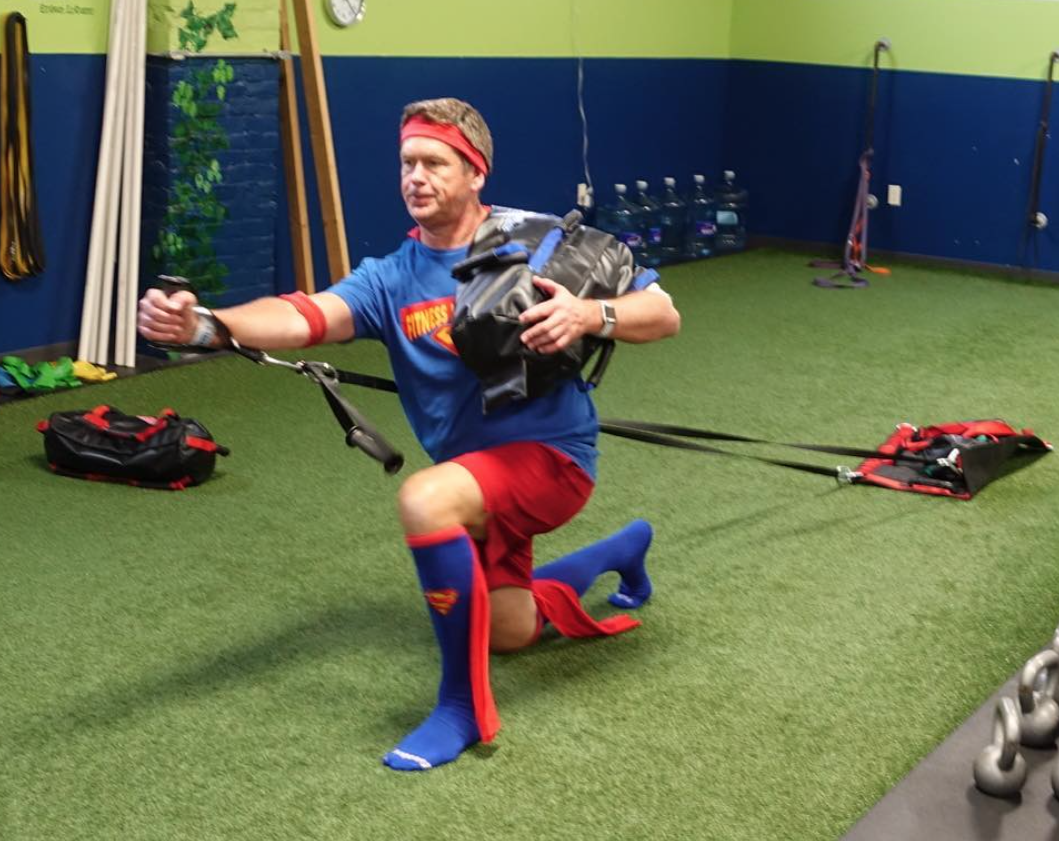3 Reasons We Get Core Training WRONG!
2019-03-18
People sometimes think that an expert is one that has never made a mistake or made the least amount of mistakes. In fact, I think an expert is one that has made A LOT of mistakes! Having said that, mistakes are only useful if we learn from them and man, I’ve tried to learn from SO many of my mistakes. That is why I love giving strategies to train smarter, because I want you to avoid my mistakes!
There might be no better example of how BADLY wrong I was than when it came to my interest in core training. As I’ve written quite a bit about, my first interest in fitness was a selfish one. I wanted to learn how to perform better for basketball, then after badly injuring my low back, I wanted to know how to make myself better.
That meant I dove into EVERYTHING I could find. You might laugh to know that this was the start of the internet so I could find information, but it was limited, slow, and was changing rapidly.
The growth of functional training in the mid to late 90’s saw information about training going a different direction quickly. No better example was the information regarding core training. Sure, we had known about working the abs for a long time, but largely they were based upon cosmetic goals. Of course we started to realize more and more body fat was more important to how our abs looked than the actual training of the abs.

One of the textbooks that really changed how I looked at what core training was and should be!
This is what the functional training experts of the time were focusing upon differentiating core training from ab training. When it came to core training they wanted to show how the core impacted how we moved, how we felt, how we performed. As someone with terrible low back pain you could imagine how I dove head first into everything I could find about core training.
That opened a can of worms that I THOUGHT I was ready to manage, but would only find out I was very ill prepared because I really didn’t understand the science. Instead of looking at the original research myself, I was okay listening to the theories others would create from the research. This made me THINK I know a lot about core training, but it actually showed me I understood very little.
Now fast forward 20 years and I can’t believe how my understanding of core training has grown, but it was because of those mistakes. So, you can imagine how I want to help others when I see them espousing well meaning, but scientifically incorrect information. If you fall into this category down’t feel badly, I can’t tell you how much growth I went through to get to the point where I could really help myself and others. Ultimately, that is the REAL goal of knowledge.
Mistake 1: We Can Isolate Abdominal Muscles
Of all the trunk muscles that were of focus when core training came about, none where more discussed than the Transverse Abdominis (TVA). Why? Why would a muscle that no one can ever see no matter your body fat, be cared so much about in regards to core training?
Believe it or not, much of the TVA discussion came from a singular study. The famous one from 1996 (you can read HERE) showed that the TVA fired late in people with low back pain. So, those of us in the fitness community made the leap that core training should prioritize the TVA to get it to work right again. Makes kinda sense right?

In retrospect, when we actually look at part of the core, the idea that core training could isolate ANY of these muscles does seem silly!
Not when you understand that the problem was really a sign of a disconnect in the motor control of the core. Meaning, isolated training of the TVA actually doesn’t solve the issue like spine expert, Dr. Stuart McGill would point out later. “It is impossible to train muscles such as transverse abdominis or multifidus in isolation – people cannot activate just these muscles. Do not perform abdominal hollowing techniques as it reduces the potential energy of the column causing it to fail at lower applied loads (McGill, 2009). Interestingly a recent clinical trial (Koumantakis et al, 2005) compared the efficacy of many of the exercises that I quantified and published in Physical Therapy (McGill 1998), with the same exercises combined with specific transverse abdominis isolation (hollowing etc.). Adding the specific transverse abdominis training reduced efficacy! Instead, the abdominal brace (contracting all abdominal muscles) enhances stability.”
We need to see that even a movement like the plank has many more elements of connecting the core that most imagine. The linkage we create is about how we use load, the ground, and try to get our core to work synergistically.
Mistake 2: The More Unstable The Exercise The Better Core Training
I remember it so clearly. It was 1998 and I was doing some training at the local Gold’s Gym. The idea of functional training was definitely NOT something that had entered this gym yet. However, with my goal of helping my low back, I had been to several prestigious corrective exercise and functional training programs and was pretty confident I knew my stuff. Of course I was 22 at the time so that explains some of the over confidence;)
Each day I would bring my stability ball to the gym. I can vividly remember the gym manager shaking his head at me and saying, “those things will never catch on” (ironically I heard the same thing about kettlebells about 5 years later;). Even though I heard such comments and got funny looks, I didn’t care. I was SURE I was doing smarter core training that would give people better results.
As the research started coming out more and more though my world was going to be shaken. This study HERE in particular (although a later one in nature) reinforced what I had seen in the gym. While my instability exercises were difficult to perform, they didn’t seem to be making people better.

Instead of unstable surfaces, using different positions allows us to train the core in smarter ways like Fitness Lying Down shows.
The study showed that using unstable surfaces did NOT enhance the body or core training more than lifting on a stable ground. What I started to realize was that core training wasn’t how unstable you could make an exercise, but how well you could start connecting the body.
As Dr. McGill puts so well, “True spine stability is achieved with a “balanced” stiffening from the entire musculature including the rectus abdominis and the abdominal wall, quadratus lumborum, latissimus dorsi and the back extensors of longissimus, ilioicostalis and multifidus.”
So, I started to look for cues and exercises that weren’t so much about burning the abs, or being really crazy, but ones that taught people how to connect their core as efficiently as possible!
DVRT Master, Larisa Lotz, shows that smart instability training is more about changing the environment in which we perform movements than the surfaces we use.
Mistake 3: Squats, Deadlifts, and Presses Do It ALL For Core Training
Like so many people in fitness, I went flying on the pendulum of ideas. I went from being the really focused “instability guy” to the “just lift heavy” guy. Having had NEW experiences that did have a positive impact upon my back, I fell into completely into a new group that thought lifting hard and heavy was the solution for everything.
Want to look better? Deadlift more. Want to be faster? Squat more. Want to feel better? Just deadlift even more! Now, there IS something to the idea of building good movement patterns as a foundation. However, I got SO into the idea, like many, of getting people lifting I skipped making sure they TRULY had good movement patterns.
What these movements SHOULD teach is how to create “core stiffness”. Those that excel at these lifts either know how to innately do so, or have trained to do so when they lift. However, what I learned the hard way is that we needed to take a step back and TEACH people how to use core training to learn how to use their core properly.
“Core stiffness is essential for injury prevention. Core stiffness is essential for performance enhancement. Core stiffness is not optimized in body building exercises. Core stiffness requires dedicated training.”-Dr. Stuart McGill
I started to gain appreciation for drills that weren’t overall “sexy” but man, they made a big impact upon how people felt, performed, and looked! That was the most important part for me and I started a whole new more moderate path of understanding truly what core training means and how it fits into our overall program!
Mistakes are okay, heck, they are even essential in our opportunity to grow. However, they are only valuable IF we are willing to take the lessons they offer us.
Don’t miss the chance to save 35% on one of the best core training tools that can be used for any fitness level, our ARES Sled. Get our complete sled, 30 exercise manual for FREE, all for a great deal with coupon code “sledsale” HERE
DVRT Master, Taizo Omura, shows how we can use the science of core training in very applicable means. Making our core smarter not just work harder!
© 2025 Ultimate Sandbag Training. Site by Jennifer Web Design.







